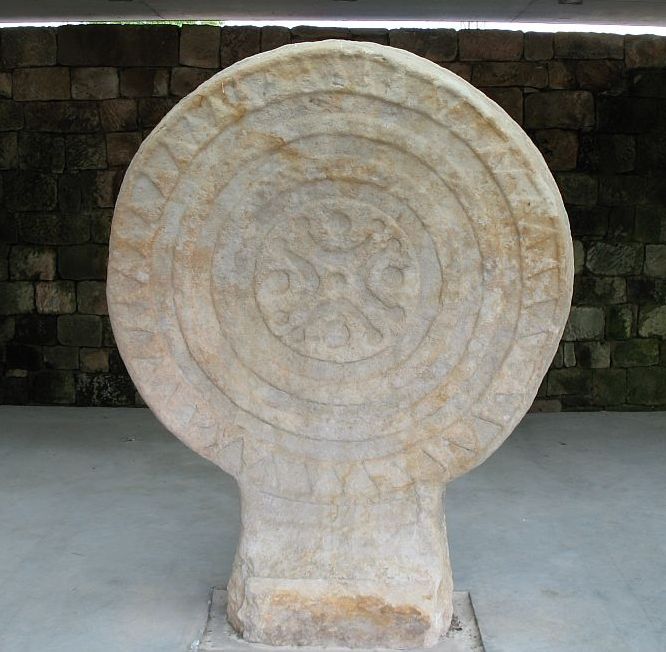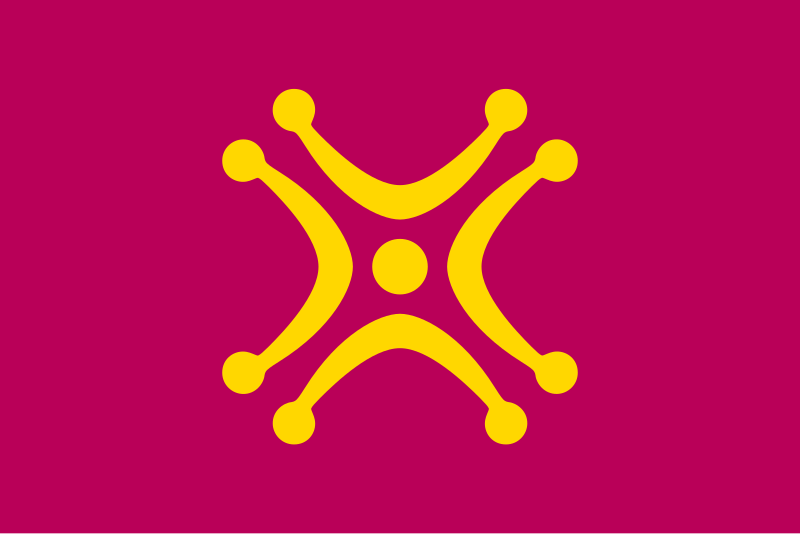|
|
| Пишет Apocalypse Won ( @ 2017-10-05 12:07:00 |
|
|
|
|
|
|
|
|
|
|
|
|
|
|
Cornisa cantabrica
Cornisa Cantábrica, галис. Cornixa cantábrica, баск. Kantauriar eskualdea) — географический регион на севере Испании, занимающий побережье Бискайского залива и Галисию, от границы с Францией до Португалии.
Территория от остальной части страны отделена Кантабрийскими горами от массива Сьерра-де-Анкарес на западе до Баскских гор на востоке.
В отличие от засушливой Месеты, в Зелёной Испании влажный морской климат. Осадки выпадают в течение всего года, 1000—1200 мм, на побережье — до 1700—1900 мм (150—200 дождливых дней). Среднегодовая температура в районе +13°С (в горах ещё ниже), а разница между самым тёплым (август) и самым холодным месяцем (январь-февраль) составляет около 12 °C.
За исключением высотных горных территорий, Зелёная Испания имеет самый холодный климат в стране. Однако, значительное количество осадков благоприятствует растительности. Берег Бискайского залива называется Зелёным (Коста-Верде), на востоке переходящий в Берег басков (Коста-Васка). Побережье и северные склоны Кантабрийских гор покрыты лесами (каштан, бук, дуб, берёза). Выше в горах созданы национальные парки и охраняемые территории, на которых обитают иберийский волк, испанский козёл и кантабрийский бурый медведь.

Green Spain (direct translation into English of the Spanish España Verde, although in Spanish the phrase 'cornisa cantábrica' is more widely used and preferred) is the name given to a lush natural region in Northern Spain, stretching along the Atlantic coast from the border with Portugal to the border with France.

The Cantabrian Sea is the southern part of the Bay of Biscay. It is the coastal sea of the Atlantic Ocean that washes the northern coast of Spain and the southwest side of the Atlantic coast of France; it represents the south area of the Bay of Biscay. It extends from the cape Estaca de Bares in the province of A Coruña, to the mouth of the Adour river, near the city of Bayonne on the coast of the department of Pyrenees Atlantiques in French Basque Country.
*
Cantabri (Greek: Καντάβροι, Kantabroi) or Ancient Cantabrians, were a pre-Roman people, probably Celtic or pre-Celtic European, and large tribal federation that lived in the northern coastal region of ancient Iberia in the second half of the first millennium BC. These peoples and their territories were incorporated into the Roman Province of Hispania Tarraconensis in the year 19 BC, following the Cantabrian Wars
Cantabrian Wars (29–19 BC) (Bellum Cantabricum), sometimes also referred to as the Cantabrian and Asturian Wars (Bellum Cantabricum et Asturicum), were the final stage of the two-century long Roman conquest of Hispania, in what today are the provinces of Cantabria, Asturias and León in northwestern Spain.
Cantabrian stelae are monolithic stone disks of different sizes, whose early precedents were carved in the last centuries before the romanization of Cantabria in northern Iberian Peninsula. Cantabrian stelae include swastikas, triskeles, crosses, spirals, helixes, warriors or pre-Roman funerary representations among their usual ornamentation. The most famous is called Estela de Barros (Barros Stele) which can be visited in the Parque de las Estelas (Stelae Park) in the town of Barros, in Los Corrales de Buelna. This stele is part of the current coat of arms of Cantabria and the meaning of tetraskelion would be related to solar worship. The Barros stele giant size represents the main difference to the smaller stelae found in other parts of northern Spain. In addition to the Estela de Barros, we can see another larger, fragmented stele in the Parque de las Estelas.

Cantabrian stele of Barros (Cantabria). Carved in sandstone and over a pier base, its dimensions are 1.70 m in diameter and 0.32 m thick.

The coat of arms of Cantabria shows in field gules, a disc-shaped stele with geometric ornaments of the kind of the Cantabrian stelae of Barros or Lombera.

Lábaru is a modern interpretation of an ancient military standard called Cantabrum and based in the design of the Barros Cantabrian Stelae.
Cornisa Cantábrica, галис. Cornixa cantábrica, баск. Kantauriar eskualdea) — географический регион на севере Испании, занимающий побережье Бискайского залива и Галисию, от границы с Францией до Португалии.
Территория от остальной части страны отделена Кантабрийскими горами от массива Сьерра-де-Анкарес на западе до Баскских гор на востоке.
В отличие от засушливой Месеты, в Зелёной Испании влажный морской климат. Осадки выпадают в течение всего года, 1000—1200 мм, на побережье — до 1700—1900 мм (150—200 дождливых дней). Среднегодовая температура в районе +13°С (в горах ещё ниже), а разница между самым тёплым (август) и самым холодным месяцем (январь-февраль) составляет около 12 °C.
За исключением высотных горных территорий, Зелёная Испания имеет самый холодный климат в стране. Однако, значительное количество осадков благоприятствует растительности. Берег Бискайского залива называется Зелёным (Коста-Верде), на востоке переходящий в Берег басков (Коста-Васка). Побережье и северные склоны Кантабрийских гор покрыты лесами (каштан, бук, дуб, берёза). Выше в горах созданы национальные парки и охраняемые территории, на которых обитают иберийский волк, испанский козёл и кантабрийский бурый медведь.

Green Spain (direct translation into English of the Spanish España Verde, although in Spanish the phrase 'cornisa cantábrica' is more widely used and preferred) is the name given to a lush natural region in Northern Spain, stretching along the Atlantic coast from the border with Portugal to the border with France.

The Cantabrian Sea is the southern part of the Bay of Biscay. It is the coastal sea of the Atlantic Ocean that washes the northern coast of Spain and the southwest side of the Atlantic coast of France; it represents the south area of the Bay of Biscay. It extends from the cape Estaca de Bares in the province of A Coruña, to the mouth of the Adour river, near the city of Bayonne on the coast of the department of Pyrenees Atlantiques in French Basque Country.
*
Cantabri (Greek: Καντάβροι, Kantabroi) or Ancient Cantabrians, were a pre-Roman people, probably Celtic or pre-Celtic European, and large tribal federation that lived in the northern coastal region of ancient Iberia in the second half of the first millennium BC. These peoples and their territories were incorporated into the Roman Province of Hispania Tarraconensis in the year 19 BC, following the Cantabrian Wars
Cantabrian Wars (29–19 BC) (Bellum Cantabricum), sometimes also referred to as the Cantabrian and Asturian Wars (Bellum Cantabricum et Asturicum), were the final stage of the two-century long Roman conquest of Hispania, in what today are the provinces of Cantabria, Asturias and León in northwestern Spain.
Cantabrian stelae are monolithic stone disks of different sizes, whose early precedents were carved in the last centuries before the romanization of Cantabria in northern Iberian Peninsula. Cantabrian stelae include swastikas, triskeles, crosses, spirals, helixes, warriors or pre-Roman funerary representations among their usual ornamentation. The most famous is called Estela de Barros (Barros Stele) which can be visited in the Parque de las Estelas (Stelae Park) in the town of Barros, in Los Corrales de Buelna. This stele is part of the current coat of arms of Cantabria and the meaning of tetraskelion would be related to solar worship. The Barros stele giant size represents the main difference to the smaller stelae found in other parts of northern Spain. In addition to the Estela de Barros, we can see another larger, fragmented stele in the Parque de las Estelas.

Cantabrian stele of Barros (Cantabria). Carved in sandstone and over a pier base, its dimensions are 1.70 m in diameter and 0.32 m thick.

The coat of arms of Cantabria shows in field gules, a disc-shaped stele with geometric ornaments of the kind of the Cantabrian stelae of Barros or Lombera.

Lábaru is a modern interpretation of an ancient military standard called Cantabrum and based in the design of the Barros Cantabrian Stelae.